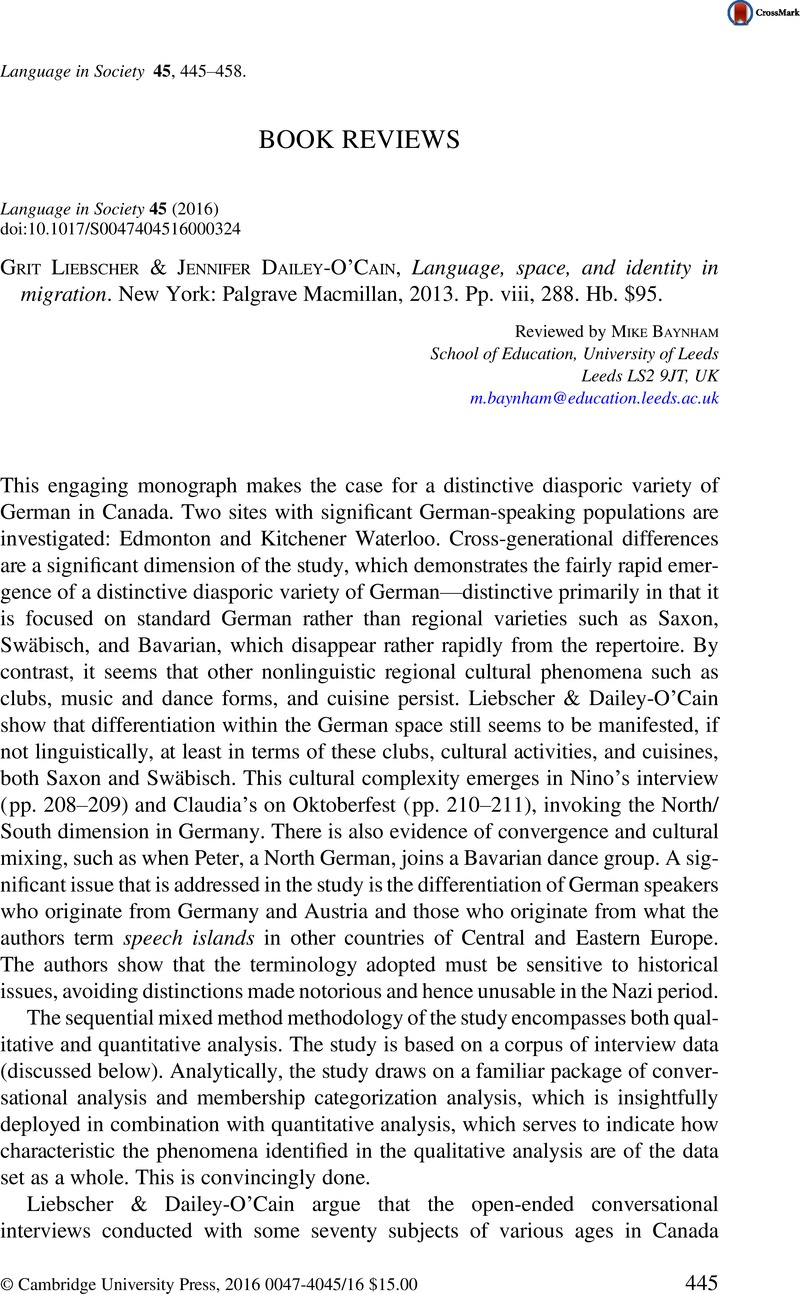No CrossRef data available.
Article contents
Grit Liebscher & Jennifer Dailey-O'Cain, Language, space, and identity in migration. New York: Palgrave Macmillan, 2013. Pp. viii, 288. Hb. $95.
Review products
Grit Liebscher & Jennifer Dailey-O'Cain, Language, space, and identity in migration. New York: Palgrave Macmillan, 2013. Pp. viii, 288. Hb. $95.
Published online by Cambridge University Press: 02 June 2016
Abstract
An abstract is not available for this content so a preview has been provided. Please use the Get access link above for information on how to access this content.

- Type
- Book Reviews
- Information
- Copyright
- Copyright © Cambridge University Press 2016
References
Bourdieu, Pierre (1979). Outline of a theory of practice. Cambridge: Cambridge University Press.Google Scholar
De Fina, Anna, & Perrino, Sabina (eds.) (2011). Special issue: Narratives in interviews, interviews in narrative studies, Language in Society 40(1).Google Scholar
Englebretson, Robert (ed.) (2007). Stancetaking in discourse: Subjectivity, evaluation, interaction. Amsterdam: John Benjamins.CrossRefGoogle Scholar
Jaffe, Alexandra (ed.) (2009). Stance: Sociolinguistic perspectives. Oxford: Oxford University Press.Google Scholar
Wolfson, Nessa (1982). The conversational historical present in American English narrative. Dordrecht: Foris.Google Scholar
Whorf, Benjamin (1941). The relation of thought and behavior to language. In Spier, Leslie (ed.), Language, culture, and personality: Essays in memory of Edward Sapir, 75–93. Menasha, WI: Sapir Memorial Publication Fund.Google Scholar


